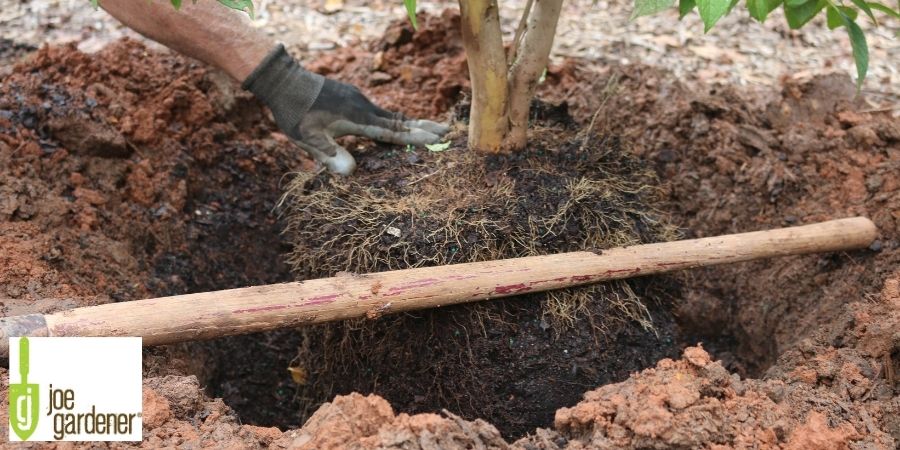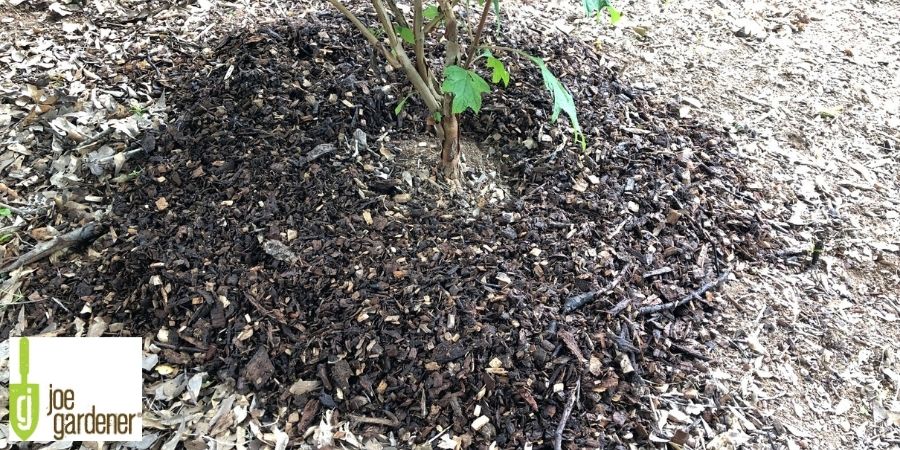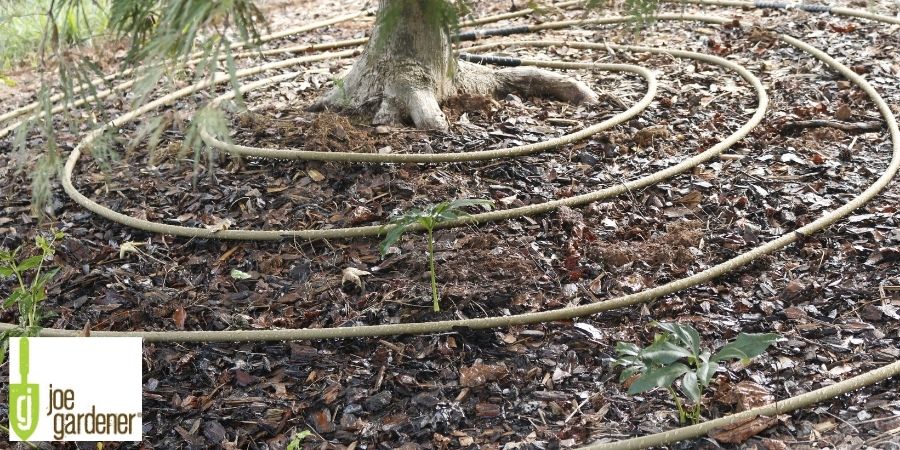The 5 Biggest Mistakes in Tree Care
- Gardening Expert and Host of Growing a Greener World®October 10, 2020
Where we go wrong with trees is often at the very beginning — at planting time and in the first couple of years when the trees are still overcoming the stress of being transplanted.
In many cases, the consequences of these mistakes do not become apparent until years later. That’s why it’s important to be conscious of the biggest mistakes in tree care before, during, and immediately following planting.
1. Siting a Tree in the Wrong Place
The tree planting mistake that can never be overcome (other than transplanting while you still have time) is siting the tree in an inappropriate environment.
Trees that require full sun will never thrive in the shade of a building or taller trees. Trees planted next to sidewalks and driveways can suffer years later while also causing damage to pavement as their roots expand.
It’s best to practice forethought.
Know how tall a tree will grow and how broad the canopy will be. Trees planted too close together or too close to a house may look neat and lush for the first few years, but when they grow to be touching the house and competing with each other for light, water and nutrients, they will require frequent pruning or even removal.

2. Planting Improperly
If a tree is planted improperly, its chances of surviving and flourishing are greatly diminished.
Investing extra care and effort into planting a tree will prove to be worth it. Attempts to undo planting mistakes often fail and are more work than planting properly in the first place.
Before planting a tree, locate the root collar. This is where the tree trunk meets the roots. Brush soil off to find where the trunk flares out, and never plant a tree deeper than the flare. The root collar is part of the trunk, and the trunk does not tolerate soil moisture like roots do. Being buried too deeply can eventually kill a tree.
Err on the side of planting the tree too high by several inches. A root collar precisely at ground level at planting time will inevitably end up lower, under the weight of the tree.
Rather than digging deep, dig a planting hole that is double the diameter of the tree’s root ball.
If a tree comes in a plastic pot, carefully liberate the roots to disentangle them, but do not sever any root that is wider than a thumb. If the tree was balled and burlapped, disturb the roots as little as possible.
After removing a tree from a plastic pot, set it in the planting hole and ensure the root collar is above ground level. For a rootball wrapped in burlap, leave the material on at this stage.
Only after the tree is placed in the hole at the correct height, unwrap the burlap and cut away what you can. It’s better to leave some burlap behind in the planting hole than to damage the roots while trying to remove it all.
The burlap will quickly decompose and not be a deterrent to root expansion.
A tree should be planted in the same native soil that came out of the planting hole. Amending the soil with moisture-retaining peat moss or fertile compost will entice the roots to only grow in that small hole, rather than growing outward and downward in search of water and nutrients.
Roots in enriched soil will stay in a small area and wrap around each other, like a root-bound plant in a pot.
After breaking up the native soil and removing any large rocks, backfill the hole a little bit at a time. Apply water so the soil settles, and then repeat with more soil and more water until the hole is filled.
3. Compacting Soil
A properly planted tree can suffer due to mistakes that immediately follow installation, like foot traffic or mechanical equipment traversing atop the root area.
In big landscaping installations and re-grading projects, workers coming and going and moving large equipment may not take care to avoid the newly filled planting hole.

Soil compaction makes it difficult for the root zone to get the air and moisture it needs and for roots to spread out. To avoid compaction, limit any activity within the dripline of the tree, at a minimum, and even farther around the tree if practical.
A generous layer of organic mulch, like 2-3 inches of pine bark or arborist’s wood chips, will create a buffer area around tree roots. It will also prevent compaction that occurs in heavy rain or when providing supplemental irrigation.
However, never apply mulch up to the point that it’s touching the trunk, as this can bury the root collar or invite pests.
4. Failing to Irrigate Adequately
The roots of a newly planted tree should never be allowed to become overly dry in the first growing season or two. Usually, a tree won’t flourish in its new location until year three, when the roots have developed and spread out.
During the spring, summer and fall, supplemental water should be applied whenever there has been less than 1 inches of rain in a week. Make up the difference for whatever Mother Nature does not provide.
The leaves will wilt when a tree is thirsty, but it is best to never let the tree get to this point. Again, mulch is useful, as it will help retain moisture between rainfall and supplemental watering.

Established trees rarely require supplemental watering but may benefit from occasional watering if growing in an area experiencing prolonged drought.
5. Overfertilizing
Trees rarely need fertilizer. The fact is, native soil typically has all the nutrients a tree will need. If it was planted properly, the roots will have spread broadly, locating all of the nutrients the tree requires.
The only reliable way to identify a nutrient deficiency is with a soil test. Even then, a soil test may reveal that the problem is not a lack of nutrients, but the pH — the acidity or basicity of the soil.
A pH level of 6.0 to 7.0 is compatible with most trees, and having the ideal pH will make the nutrients present in the soil more readily available to trees and other plants. (To adjust pH, apply sulfur to lower it or lime to raise it.)
A newly bought tree was likely pumped up with fast-acting, synthetic nitrogen fertilizer to promote aggressive top growth to make it appear attractive and healthy in a nursery. Applying more of the same fertilizer will deter roots from spreading and enabling longtime vigor.
If your soil test report recommends supplementing your native soil with more nitrogen fertilizer, consider a slow-release, organically derived source of nitrogen, such as Milorganite. It’s non-burning, meaning it won’t harm your tree, or anything growing around it.
And the benefit of Milorganite releasing nutrients slowly means, longer term, continuous feeding, rather than a quick high dose of one and done. That’s not best practices and it shouldn’t be yours either.

